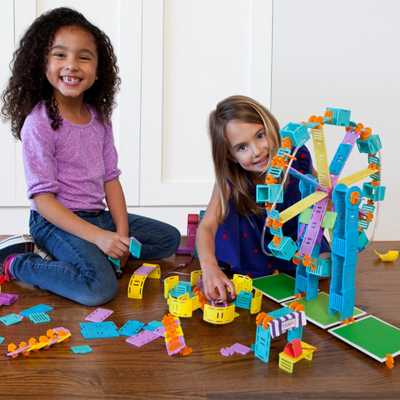The American Association of Pediatricians (AAP) recently released an updated report about the best toys for childhood development.
The APP says that “the best toys go back to the basics” .
The updated guidelines for both pediatricians and families confirms that although toy aisles are increasingly filled with blinking lights, soundtracks, and screens, the very best toys for learning are also the simplest toys: blocks, dolls, games, and balls.
Aleeya Healey, MD, FAAP, a lead author of the report, says:
“Toys have evolved over the years, and advertisements may leave parents with the impression that toys with a ‘virtual’ or digital-based platform are more educational,”
“Research tells us that the best toys need not be flashy or expensive or come with an app. Simple, in this case, really is better.”
When our children are young, they need toys that make them social and that encourage relationships. Toys that help their develop their language, their social skills, their physicality, and their problem solving are what’s needed.
While simple toys like a bat and ball and stacking blocks encourage all of these things, screens and digital toys can isolate children and it also makes them inactive.
The report also says that even fancy, high-tech toys that are advertised as “educational” aren’t as good as the basic toys which promote communication and relationships, with parents, caregivers, and other children around them.
The report also gives specific tips for parents who are buying toys for their kids – like avoiding overstimulating toys, toys which promote gender or race stereotypes, and toys that don’t foster human interaction.
Instead, Parents should look for toys which encourages creativity, interpersonal play, and imaginative play!
Here are a list of traditional toys which promote the best types of developmental play according to the report:
- Dolls and action figures
- pretend cooking/food toys
- toy cars
- blocks
- Puzzles
- Trains
- art supplies
- card games
- board games
- toy letters
- bikes
- trikes
- Balls
- push and pull toys
They also give examples of modern toys that do not promote development like phones, tablets, screens, electronic games, , laptops, toys with lights and sounds — and any toy that basically substitutes a human interaction, for example a teddy that reads a story.
You can read the full report here.

